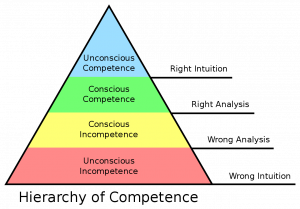HFI-U Recommends Deep Thinking for Healthier, More Profitable Spaces

Thinking deeply and investing in the health of the workforce and building occupants may mean spending more money on proactive, preventative measures with strong ROI.
Thinking deeply about facility impact on health and performance, and avoiding shallow thinking, is foundational to high-performance, healthy indoor spaces.
NAMPA, ID, US, January 15, 2020 /EINPresswire.com/ -- HFI-U is advising facility professionals to think deeply about the impact their buildings have on health and performance, and to avoid shallow thinking.
Examples of deep thinking include:
A. Viewing each building as an ecosystem in which the whole is greater than the sum of the parts.
B. Investing in the health of the workforce and building occupants even if this means spending more money on proactive, preventative measures.
“There are several shallow thinking snares that impair health and fiscal wisdom in our facilities,” noted Allen Rathey, principal of HFI-U. “Our advice is to go deep―or go home.”
Per the book, Deep Work by Cal Newport, examples of shallow thinking include:
“The Principle of Least Resistance: In a business setting, without clear feedback on the impact of various behaviors to the bottom line, we will tend toward behaviors that are easiest in the moment.”
“Busyness as Proxy for Productivity: In the absence of clear indicators of what it means to be productive and valuable in their jobs, many … workers turn back toward an industrial indicator of productivity: doing lots of stuff in a visible manner.”
See also the excellent YouTube video, Success in a distracted world: DEEP WORK by Cal Newport
When it comes to the care of our buildings and people, deep-thinking-driven steps can yield excellent Return on Investment (ROI):
1. Clean more (not less) to remove contaminants from the indoor space. Removing soil and pollutant sources ultimately reduces labor, improves health, well-being, and productivity. In 2002, indoor air quality (IAQ) expert Bill Fisk estimated the annual ROI from better IAQ in U.S. commercial buildings ranged from $20 to $200 billion in higher worker performance; and such benefits may exceed costs by 900-1400%.
2. Reduce use of fragrances that aggravate chemical sensitivity. Per the study, International prevalence of chemical sensitivity, co-prevalences with asthma and autism, and effects from fragranced consumer products, Feb. 2019, Air Quality, Atmosphere & Health: 28.6% of “those with chemical sensitivity have lost workdays or a job, in the past year, due to exposure to fragranced products in the workplace”.
3. Strive for employee happiness. A University of Warwick study found happier employees had 12% greater productivity. The 2015 Journal of Labor Economics stated, “Lower happiness is systematically associated with lower productivity.”
The benefits of deep-thinking are most evident when viewed through a long-term lens in which personnel are brought to higher levels of competence through ongoing training in better process and contaminant removal.
Management should think deeply about the problems and solutions to help workers progress and learn along a continuum of competence; an effort that takes time and commitment.
The four levels of deep-thinking-based, healthy-facility competence―with level four being best―are:
1. Unconscious Incompetence
Example: The worker does not understand how to dust properly, may not recognize poor process, or see the need for change. He/she must understand the failure path and the value of a new approach before they can move to level two.
2. Conscious Incompetence
Example: The worker understands why using a feather duster spreads more dust than a dampened microfiber cloth, but old habits persist, and they have not yet adopted the use of microfiber tools.
3. Conscious Competence
Example: The worker sees the advantage of microfiber dusting, and has adopted it, but must willfully focus and concentrate to execute the new skill of using a dampened microfiber cloth for routine dusting.
4. Unconscious Competence
Example: Through practice, proper dust removal using microfiber has become habitual, easy, less time-consuming; and the person can teach others.
Reaching level four, Unconscious Competence, relates directly to building good habits.
Patience and persistence in taking actions based on deep thinking to improve the health of people indoors―and build the competence and habits of staff―can produce healthier, more profitable spaces.
Allen Rathey
HFI University (HFI-U)
+1 208-724-1508
email us here
Legal Disclaimer:
EIN Presswire provides this news content "as is" without warranty of any kind. We do not accept any responsibility or liability for the accuracy, content, images, videos, licenses, completeness, legality, or reliability of the information contained in this article. If you have any complaints or copyright issues related to this article, kindly contact the author above.


